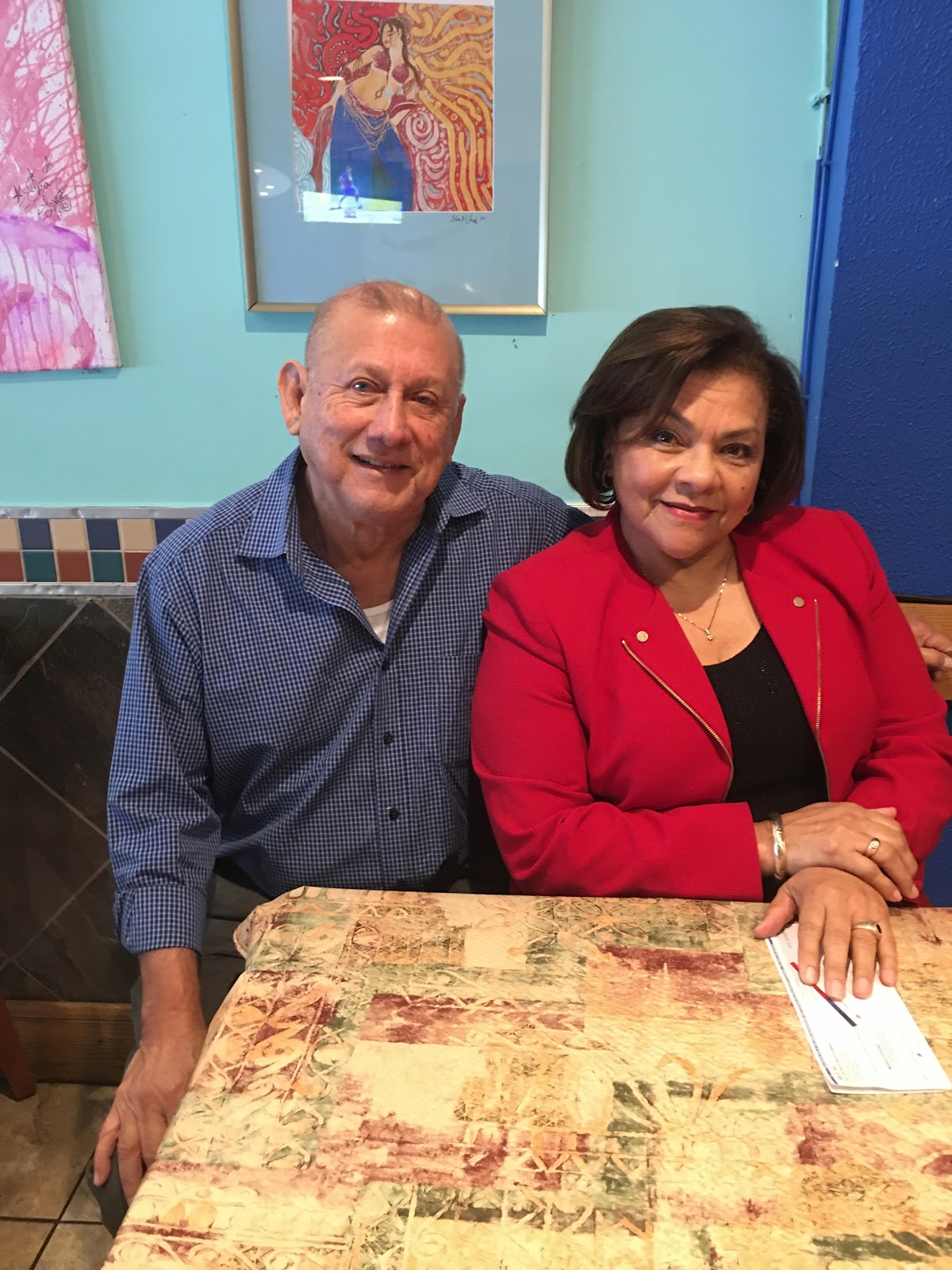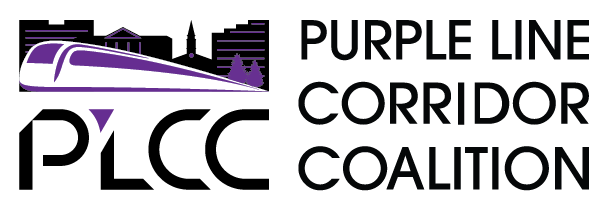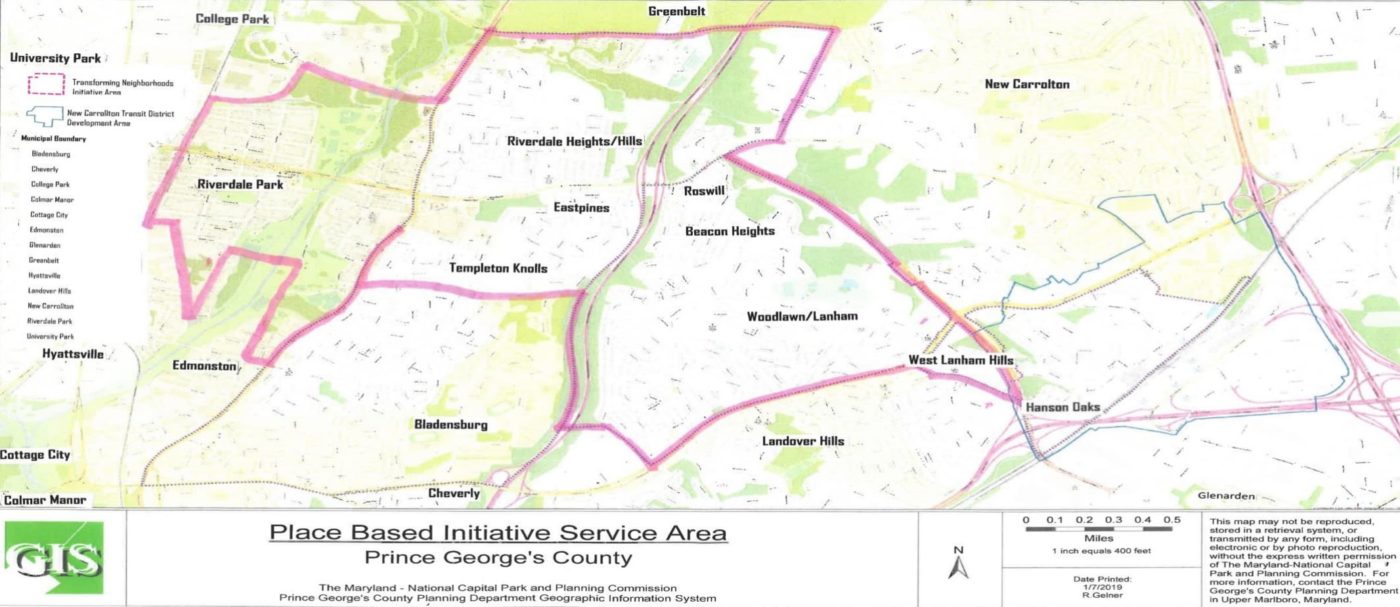Welcome to PLCC Inaugural Newsletter
Issue 1, June 2019
Welcome to the first of what will become a regular, quarterly update on the work of the Purple Line Corridor Coalition.
The coalition was founded as a positive response to the once-in-a-lifetime chance to leverage Maryland’s largest transit investment in the 21st century to increase access to good jobs, housing choices, and vibrant communities along the whole Purple Line corridor.
With recent funds in hand, we are upping our commitment to create equitable, sustainable, and culturally appropriate development that enhances the livability of communities along the line.
This quarterly e-publication will provide updates on the work of the coalition, share important news that may positively or negatively impact residents and businesses along the corridor, spotlight important work occurring in the community, and alert readers about new plans, initiatives, and projects that will guide and align our work.
Welcome aboard – it will take all of us to ensure we truly create a Purple Line for All.
Sincerely,
Gerrit-Jan Knaap
Director, National Center for Smart Growth (NCSG)
2019 Stakeholder Workshop
March 22nd marked a critical reconvening of the Purple Line Corridor Coalition (PLCC). Organized as a one-day workshop, the meeting brought together more than 100 nonprofit leaders, policy advocates, agency staff, and political leaders from Prince George’s and Montgomery counties to discuss goals, strategies, and progress through breakout sessions and a panel of speakers.
Speakers included Montgomery County Executive Marc Elrich, Prince George’s County Deputy Chief Administrator Floyd Holt, as well as leaders from Maryland Transit Administration, Purple Line Transit Partners, Enterprise Community Partners, and Kaiser Permanente.
Leaders attended breakout sessions that were organized around the four goals of the November 2017, PLCC Community Development Agreement (CDA) for the Purple Line Corridor.
Hosted by the University of Maryland’s National Center for Smart Growth – which leads the work of the PLCC and co-chairs its steering committee with Enterprise Community Partners – the workshop focused on updates on the Purple Line since the signing of the 2017 CDA and featured in-depth discussions to set priorities for the next 12 months for affordable housing, small business preservation and sustainability, workforce development, and neighborhood preservation in the midst of significant transit-oriented development.
Who Attended?
The workshop featured a balance of participants by county, with approximately 40% from each county, and nearly 20% from other parts of the metro Washington DC region. More than 80% of participants were currently involved with work in the corridor, with the remainder planning to be involved in the near future or who had been involved in the recent past. Half of the participants were involved around more than one issue (e.g., housing, small business, construction of the line, etc.)
Challenges & Opportunities
In a poll taken during the meeting, attendees viewed the top four challenges facing the corridor over the next few years to be:
- Keeping residents and families from getting displaced
- Preserving the affordability of housing
- Helping business owners survive during construction
- Ensuring our neighborhoods become more walkable, bikeable and accessible
While they viewed the top four opportunities in the corridor over the next few years to be:
- Moving more easily to jobs along the corridor
- New or expanded opportunities for existing and new business owners
- Great access to amenities for residents and workers in the corridor
- Creating jobs along the corridor
Potential Impacts of Development
Participants were reminded about the likely development that will ultimately take place along the corridor, which will have both positive economic impacts (job growth; more amenities; etc.) that could easily result in negative social impacts (significant displacement). Among the statistics shared were:
- More than $2 billion of real estate development is either underway or planned, four years before passenger service
- Conservative estimate: 7.7 million square feet of development
- Equals more than twice the usable square footage of the world’s largest office building, the Pentagon
- The level of anticipated development underscores the need for this initiative to ensure development is done right
Purple Line DBE Participation & Employment
Fred Craig from Purple Line Transit Partners (PLTP) also shared data about the involvement of disadvantaged business enterprises (DBEs) in the construction of the line. Although PLTP has met its design goal of 26% participation for DBEs (11 Prince George’s and Montgomery county DBE firms participating, it has thus far fallen short on its construction DBE goal (at 6.2% instead of 22%), although 26 Montgomery and Prince George’s county firms are participating.
About 36% of the skilled and unskilled construction jobs filled by the Purple Line concessionaire come from the two counties (25% from Prince George’s, 11% from Montgomery), with 26% coming from elsewhere in Maryland and 38% from beyond Maryland. The PLCC will be looking to find ways to increase employment for residents from both counties going forward.
The concessionaire currently employs 466 workers full-time, with approximately 69% being workers of color, well above the Affirmative Action/EEO goal of 28%. Female workers make up 4.1% of the workforce, below the AA/EEO goal of 6.9%.
Commitments from One of our New PLCC Members
Celeste James, representing the newest member of the PLCC Steering Committee – Kaiser Permanente (KP), shared the investment her company is making to the Prince George’s side of the corridor. James, the executive director of community health at KP, reminded attendees that the zip code you live in is a better predictor of health than your genetic code, so KP is committed to addressing issues “upstream” (such as economic stability, education, and housing) that are critical to improving health and fostering equity.
Kaiser Permanente is leading a new effort along the corridor, Accelerating Investments for Healthy Communities (AIHC), funded by the Center for Community Investment, to help them work with community partners to deploy their assets to advance affordable housing as a way to create more equitable, sustainable, and healthy communities. Many members of the PLCC coalition will participate in this essential effort.
How the Coalition will be Governed
David Bowers, a vice president at Enterprise Community Partners and PLCC co-chair, provided a high-level overview for how the coalition will be governed going forward. The PLCC will be led by a 17-member steering committee of public, private, and non-profit members, and will perform its work through 4 goal action teams and 5 cross-cutting advisory groups. The diagram below shows the full governance structure for the coalition; this structure will continue to evolve as the work proceeds.
State of the Corridor
Gerrit Knaap, director of the National Center for Smart Growth (NCSG) at the University of Maryland, presented a range of data the center has been collecting and tracking about the corridor, including on demographics, poverty, housing construction, home prices, and rent levels for multi-family housing.
Knaap also shared the main elements of a new, $2 million (for 2 years) grant that the Federal Transit Administration gave to the Maryland Transit Administration as part of a national, competitive grant process. NCSG will serve as the central coordinator for the work on this grant. The grant will invest in work in four areas:
- Multi-mobility plan and web tools
- Corridor-wide economic development plan
- Small business needs assessment and support strategy
- Transit-Oriented Development (TOD) Finance plan
Participants spent the majority of the afternoon in small group discussions to identify key priorities for 2019-2020 for housing, small business, workforce, and neighborhood preservation and redevelopment. PLCC is using this input during the spring and summer to support the ongoing work of the Housing Action Plan process (being led by Enterprise Community Partners) and to help launch the work of the FTA grant and to support the formation of the small business and workforce development working groups.
Thanks to all who joined us on March 22nd to take us to the next stage of work along the corridor in 2019. We will keep you posted quarterly on our progress!
POLICY SPOTLIGHT: Comprehensive Housing Strategy, Prince George’s County
This spring, the Prince George’s County Council formally approved a landmark document, “Housing Opportunity for All” that will serve as the guiding strategy for implementation of the county’s Comprehensive Housing Strategy (CHS).
The timing of this strategy is critical, as the entire county, as well as many areas of the Purple Line in Prince George’s are experiencing increasing rent and home prices, which could potentially place many current residents at risk of displacement.
The strategy seeks to reduce regulatory barriers constraining new development while proposing significant investment in revitalizing abandoned properties and spurring the construction of affordable homes.¹
In early April 2019, the Council established Housing Opportunities for All Workgroup, which it charged with assisting the county in setting priorities and providing advice on future legislation and changes to County policies, regulations, and distribution of resources.² The Workgroup, whose 19 members will get appointed this spring will meet quarterly, and consists of members from relevant county agencies, as well as municipal, private, and non-profit representatives from a wide range of county, state, or regional organizations.
The Housing Opportunity for All strategy looks to achieve three primary goals:
- Support existing residents, including long‐time residents, seniors, residents with disabilities, and residents at‐risk of displacement.
- Attract new residents, including millennials, employers, and developers.
- Build on strategic investments & submarket conditions, including transit‐oriented development (TOD) areas like the Purple Line Corridor, areas around strategic assets and major public investments, and areas that designated under the County’s Transforming Neighborhoods Initiative (TNI) and federal Opportunity Zones.³
The report that supports the CHS found that existing residents face:
- Lack of diverse housing options which impacts the ability to attract new residents and affects affect current residents’ ability to stay in the county.
- Growing market strength, which presents opportunities for growth, but also causes concern about the risk of gentrification and displacement.
- Challenges with housing costs, particularly housing that aligns with their earnings, resulting in cost‐burdens.
- Issues resulting from the County’s aging housing stock and the quality of some of that housing stock.⁴
Findings related to attracting new residents indicate that the County needs to:
- Provide more housing options in neighborhoods with amenities (like shopping and transit) and resources as it currently has options at only a few price points and building types.
- Locate barriers to new development and the pace of that development, especially in TOD areas and areas inside the beltway.
- Find ways to overcome perception issues about the desirability of living in the county despite the fact that underlying conditions (e.g., school performance, public safety, etc.) have improved.⁵
County decisionmakers view Housing Opportunities for All as a roadmap to establish Prince George’s County as a Community of Choice through three cross-cutting strategies and three targeted strategies.
Cross cutting strategies:
- Enhance policies and incentives to promote housing development and preservation throughout the county by creating a more supportive environment for housing development and offering tools to help stabilize vulnerable residents.
- Increase collaboration, coordination and transparency to expand partnerships, improve coordination, and increase transparency on priorities and process to respond to changing market conditions and resident needs.
- Expand funding and diversify financing mechanisms to increase development and other housing opportunities.⁶
Targeted strategies:
- Encourage new, context-sensitive development that expands housing types to serve the county’s diverse population and distinct geographic character
- Improve the quality of the county’s existing housing supply, including older homes and income-restricted properties, and help keep housing costs low to stabilize residents at-risk of displacement.
- Use new housing development and coordinated public investments to build stronger economic opportunity and revitalize neighborhoods.
As is true with a number of recent housing-related studies and plans in Montgomery County, Prince George’s County’s Housing Opportunities for All will serve as a critical guide in shaping the development of the PLCC’s Housing Action Plan, which will be drafted and finalized over the course of late spring and summer both overall for the corridor but especially for the communities on the Prince George’s side.
SMALL BUSINESS SPOTLIGHT: El Alazan Western Wear in Langley Park
El Alazan is a family-owned business in the Holton Lane strip that sells western wear like cowboy boots and hats. Husband and wife owners Ernesto Portillo and Nora Reyes have been working on a brand update in anticipation of new business from the nearby Purple Line station. PLCC stakeholders Latino Economic Development Center connected the business with pro-bono branding professionals.
1337 Holton Ln, Takoma Park, MD 20912
See hours and information here.
VIBRANT, SUSTAINABLE COMMUNITY SPOTLIGHT: Symbiosis Mural
‘Symbiosis’ – Mural by Krsko Creative Group sponsored by the City of Takoma Park.
During the summer of 2017, the Takoma-Langley Crossroads Development Authority celebrated the completion of a new mural on Holton Lane. The mural, located on the eastern wall of El Alazan Western Wear, highlights the theme of symbiosis, with plants and insects that benefit each other. The mural is the work of artist Peter Krsko, who painted a mural with a migratory theme across the street in 2015. In the weeks prior to the unveiling of the symbiosis mural. Krsko invited members of the community to help him complete the painting.
Click here to see pictures of the community helping to put finishing touches on the mural.
References:
- Alex Koma, “Prince George’s weighs big changes to spur more residential development,” Washington Business Journal, March 25, 2019 (https://www.bizjournals.com/washington/news/2019/03/25/prince-georges-weighs-big-changes-to-spur-more.html.
- Prince George’s County Council website, “Housing Opportunity for All Workgroup,” https://pgccouncil.us/628/Housing-Opportunity-of-All-Work-Group.
- Prince George’s County Council and Enterprise Community Partners, Inc., “Housing Opportunity for All: COMPREHENSIVE HOUSING STRATEGY,” https://www.princegeorgescountymd.gov/DocumentCenter/View/24992/CHS—Housing-Opportunity-for-All-FINAL-complete-with-appendices, 2019, p. 4.
- Ibid, pp. 4-5.
- Ibid, p. 5.
- Ibid.










